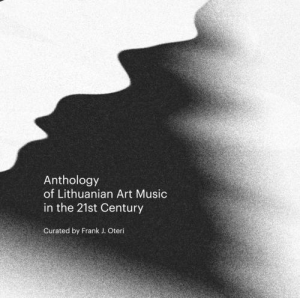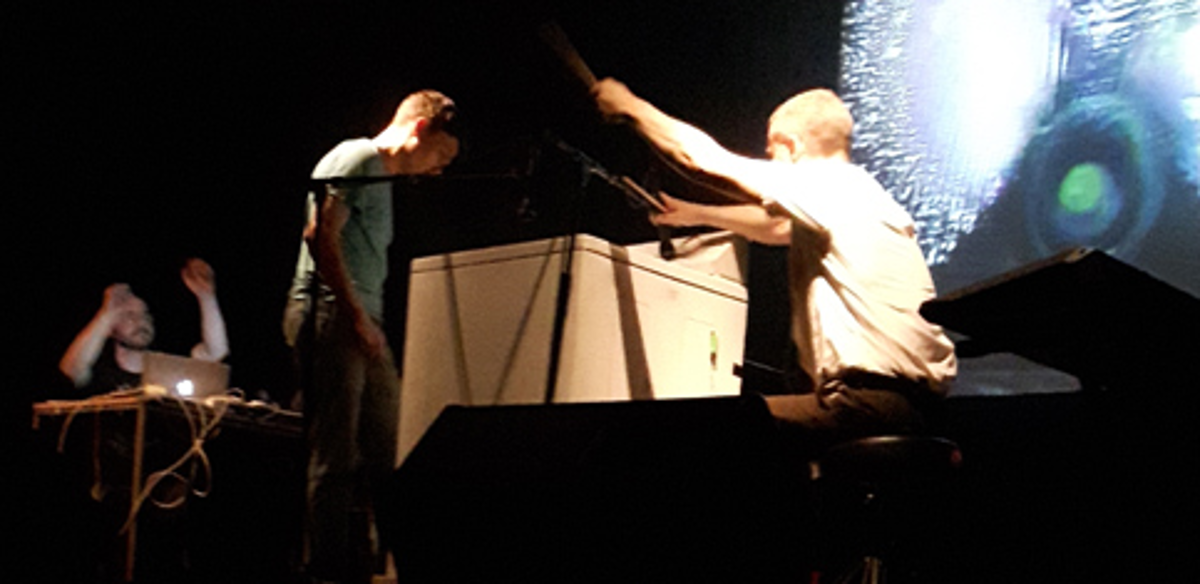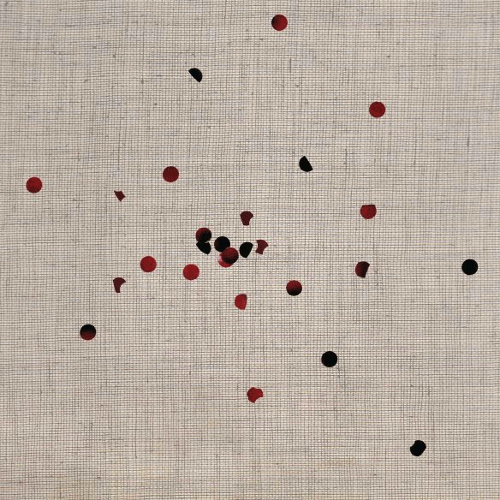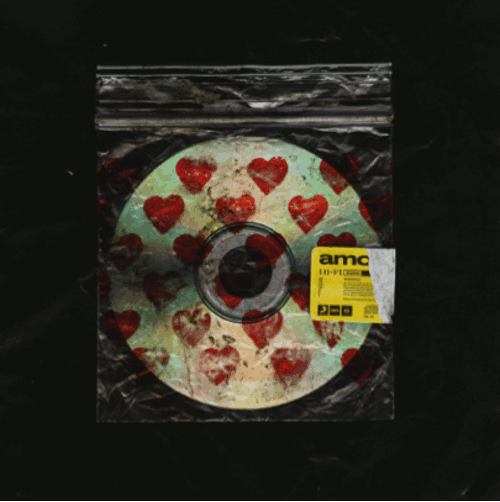Music Information Centre Lithuania
 This has the descriptive title of Anthology of Lithuanian Art Music in the 21st Century, which could mean a few things, but what we actually have is a load of contemporary compositions from Lithuania. The first thing to say — and this is among the higher of compliments I can give — is that the liner notes are genuinely exhaustive. I didn’t get a full release, but there’s apparently a PDF that comes with it with all the scores. And that’s on top of a 36-page, largely pictureless booklet with a substantial essay by the compiler, Frank J Oteri. It’s a gorgeous essay, showing Oteri to have an enormous sympathy for a wide range of music, Lithuanian and otherwise.
This has the descriptive title of Anthology of Lithuanian Art Music in the 21st Century, which could mean a few things, but what we actually have is a load of contemporary compositions from Lithuania. The first thing to say — and this is among the higher of compliments I can give — is that the liner notes are genuinely exhaustive. I didn’t get a full release, but there’s apparently a PDF that comes with it with all the scores. And that’s on top of a 36-page, largely pictureless booklet with a substantial essay by the compiler, Frank J Oteri. It’s a gorgeous essay, showing Oteri to have an enormous sympathy for a wide range of music, Lithuanian and otherwise.
So again, a note of respect to the compiler here — Oteri has committed to get a broad range of ideas and ages expressed here and, for what is the very first time in any compilation I have in any genre, he’s passed the Bechdel Test with a 50/50 gender split (note — I have plenty of compilations of music by women, but those don’t count for obvious reasons). Moreover, there’s a real commitment to younger composers. I typically tell myself that, in my mid-thirties, I’ve still plenty of time to get into composition; here, there’s people as young as twenty-three sharing space with far more established names.
What I’m probably not going to do, basically, is give this justice — the tl;dr of this review is that it’s basically an entirely necessary document of composition, and doubly so because Lithuania isn’t typically considered a “strong” nation of composers in my part of Europe.
Oteri is at pains in his notes to be less committed to “favourites”, which makes for a great compilation, but I’m an irrational sop so I just want to start by saying that Elena Sataite‘s “Eremos” is a genuinely astonishing piece; she was twenty-three when she wrote it, so presumably there’s something to be said for not beating invention out of composers. It’s a preponderous, wandering piece with a real beauty to it — I sort of want to say it’s something like Alf Schnittke (minus the sarcasm) or Allan Petterson (minus the tonally abstruse sections), but neither of those fit beyond my excitement. She’s showing herself to have a prodigious understanding of texture, movement and variegation as well as touching on ideas from across the compositional spectrum, always developing but never quite losing sightt of her themes. So maybe something like a neo-(Richard) Strauss? Not sure, but it’s entirely gorgeous.I get the impression Oteri’s milieu is fairly academic, so there’s a few pieces that could rightly serve as practice pieces — Loreta Narvilaitė‘s “The Wave Accompanies The Bird’s Flight” is a lush and complex piece for solo violin, with enough lyricality to wow a concert audience whilst also containing enough technique — spizz, pizz, flautato and arpeggios — to keep a competent violinist busy for a fair while, which also keeps them away from Bach sonatas and partitas for a bit (it’s fine, they’re not going anywhere). Elsewhere, there’s Antana Kučinskas‘s “Scratched Duo”, which is a folk-like motif expressed in part as if by a DJ; huge, ostentatious violin scrapes over a microsampling of Henryk Wieniawksi‘s Mazurka op. 19, no2. It’s a piece of fairly prodigious variation — as much a study in rests and time signatures as it is a melodious piece.
Something that I’m keen not to do is suggest anything like a national “character” to Lithuanian music in the twenty-first century. But there’s a couple of entries here which seem to do a kind of representational turn — not something that’s often seen in composition since Ianis Xenakis‘s exceptional abstractions or perhaps Arthur Honegger‘s Pacific 231 (this is a lie to cover a rhetorical device — it happens loads). Linas Baltas‘s “Popcorn” does a job of representing, then heavily mutating, the sound of popcorn popping; first in snares, later as pianistic lines or viola parts; it’s a peculiar piece, drawing on hugely variegated, apparently twelve-tone serialism whilst also partly dwelling in minimalist tonalities. Elsewhere, Raimonda Žiūkaitė‘s “Chromatography” uses dense dissonances and tonal subtraction resolving to a large unison in order to illustrate the process of separation of the piece’s title. It’s a gorgeous and complex piece, at once reminding me of Olivier Messiaen‘s preponderous works for large organ as much as something like Toshio Hosokawa‘s “Sound & Light”.A comparison much closer to Freq’s usual stock in trade popped up in my notes (I’m not yet clear if it did so disingenuously or not) — Albertas Navickas‘s “Blanche T’a Vu”, sung by Eglė Sirvydytė, sounds like a more complex Jarboe — lugubrious and drifting, and clearly very composed, but still with a breathing humanity and attention to a lot of tonal detail over voice, flutes and looped elements. Elsewhere, we’re seeing a few more traditions covered — Philip Glass-style minimalism (Jonas Jurkūnas‘s “Self-made String Of Tiny Amber Beads Turned Into (English) Numbers”), luscious waves of choralness (Julius Aglinskas‘s “The New Net In Two”; Žibuoklė Martinaitytė‘s “The Blue Of Distance”), ostensibly “old” style music given a very modern swing (Jurgita Mieželytė‘s “Triglyph” for flute, viola and harpsichord”).
Weirdly (for me perhaps), there’s a peice on here that’s not a million miles away from the sort of ideas used by Jute Gyte, Rytis Mažulis‘s “Non In Commotione” could very blithely be described as “minimalist” but, like Gyte, there’s a slew of complexity from an apparently limited tonal palette — each part is drilling away in different tempi, and while the tonal base is narrow, the microtonal changes create this astonishing, really disorienting effect; and unlike a raft of “noise for noise” compositions that miss the point of Xenakis, this manages to vary enough to carry on being compelling. I’m not clear how systematic that is — I’d say it’s too woozy to be a systems piece — but however it deserves to be listened to by me, in a live setting, in the UK (so anyone at the Proms, make a note of that for 2018).I’ve wittered on a lot at this point, but just to close — there’s a quote in the blurb that runs thusly: “Despite centuries of foreign invasions, occupations, and territorial realignments, Lithuania has remained a defiantly independent cultural outlier and has retained its own extremely unusual language, one which does not bear a significant relationship to any other European tongue except for that of its Northern neighbour Latvia.” I can’t disagree with that and, while I still don’t want to characterise any of this as specifically “Lithuanian” (for one, I’m massively unqualified to do so), there’s clearly something going on there that deserves to come to a wider attention; perhaps by the middle of this century the average composition fan in the north of Europe will be able to name more than one Lithuanian composer.
-Kev Nickells-



